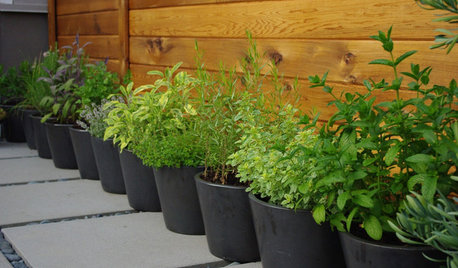What type of fungus? (pics)
organicnoob
14 years ago
Related Stories

HOUSEPLANTSIndoor Winter Gardens for Cheerier Days
Bring plants inside for drab-days mood boosting — not to mention cleaner indoor air and protection for your greenery
Full Story
MOST POPULARHow to Get Rid of Those Pesky Summer Fruit Flies
Learn what fruit flies are, how to prevent them and how to get rid of them in your home
Full Story
COLORHave You Heard the Hues? 15 Colors You May Not Know About
Name-drop these shades at holiday parties — or better, try one on your walls — and expand your palette possibilities
Full Story
WINTER GARDENINGPruning Secrets for Exquisite Roses
Encourage gorgeous blooms year after year with this time-tested advice on how to prune your rosebush in winter for health and shape
Full Story
ARCHITECTURERoots of Style: Shingle Style Is Back — Here's How to Spot It
Intimate or rambling, in the coast or by the sea, Shingle homes are seeing a revival. Has your home joined in?
Full Story
KITCHEN DESIGN10 Big Space-Saving Ideas for Small Kitchens
Feeling burned over a small cooking space? These features and strategies can help prevent kitchen meltdowns
Full Story
GARDENING GUIDESWhat Kind of Roses Should You Grow?
Want to add the beauty of roses to your garden? Find out which ones, from old-fashioned to modern, are right for you
Full Story
FLOWERSSee the Amazing Orchids Unfolding at a New York Garden Show
Get an eyeful of awe-inspiring orchids in incredible colors and learn how to keep one happily blooming at home
Full Story
GARDENING GUIDES4 Herb Container Gardens for Fabulous Global Cuisine
Tingle your taste buds with the unbeatable taste of fresh herbs in your Italian, Asian, Mexican or French fare
Full Story
LIFESimple Pleasures: Put On Your Slippers
Preserve the peace and protect your floors and carpets by turning your home into a no-shoes zone
Full StorySponsored






billhill
Kimmsr
Related Professionals
Deer Park Landscape Architects & Landscape Designers · Waterbury Landscape Contractors · Aloha Landscape Contractors · Brownsville Landscape Contractors · Cockeysville Landscape Contractors · Cornelius Landscape Contractors · Gloucester Landscape Contractors · Marlborough Landscape Contractors · Antioch Landscape Contractors · Tyngsboro Landscape Contractors · Cincinnati Driveway Installation & Maintenance · Cincinnati Driveway Installation & Maintenance · Claremont Fence Contractors · Homestead Fence Contractors · Peoria Fence ContractorsorganicnoobOriginal Author
hgiljr
organicnoobOriginal Author
Kimmsr
rhizo_1 (North AL) zone 7
organicnoobOriginal Author
organicnoobOriginal Author
dchall_san_antonio
organicnoobOriginal Author